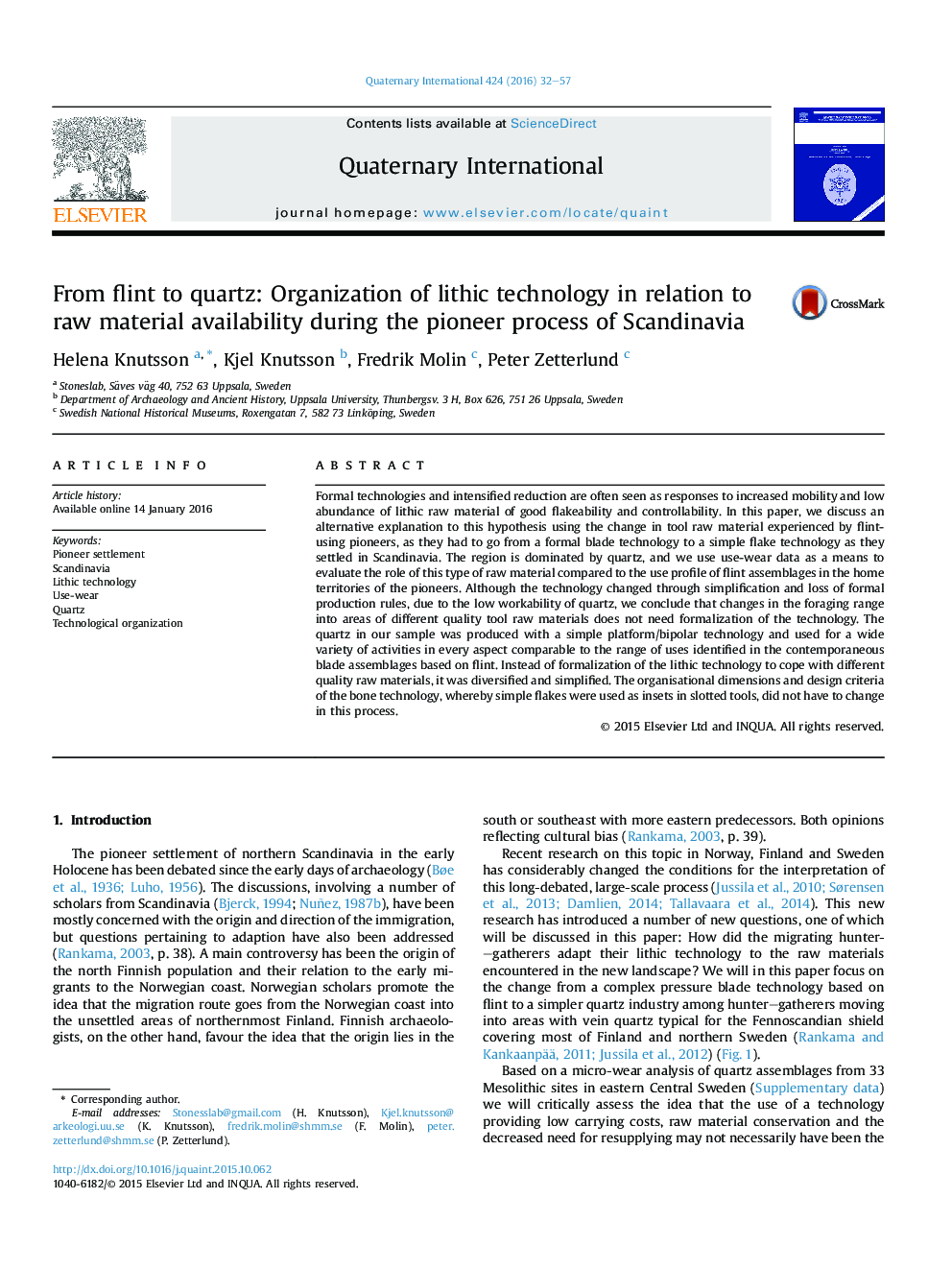| Article ID | Journal | Published Year | Pages | File Type |
|---|---|---|---|---|
| 5113489 | Quaternary International | 2016 | 26 Pages |
Abstract
Formal technologies and intensified reduction are often seen as responses to increased mobility and low abundance of lithic raw material of good flakeability and controllability. In this paper, we discuss an alternative explanation to this hypothesis using the change in tool raw material experienced by flint-using pioneers, as they had to go from a formal blade technology to a simple flake technology as they settled in Scandinavia. The region is dominated by quartz, and we use use-wear data as a means to evaluate the role of this type of raw material compared to the use profile of flint assemblages in the home territories of the pioneers. Although the technology changed through simplification and loss of formal production rules, due to the low workability of quartz, we conclude that changes in the foraging range into areas of different quality tool raw materials does not need formalization of the technology. The quartz in our sample was produced with a simple platform/bipolar technology and used for a wide variety of activities in every aspect comparable to the range of uses identified in the contemporaneous blade assemblages based on flint. Instead of formalization of the lithic technology to cope with different quality raw materials, it was diversified and simplified. The organisational dimensions and design criteria of the bone technology, whereby simple flakes were used as insets in slotted tools, did not have to change in this process.
Related Topics
Physical Sciences and Engineering
Earth and Planetary Sciences
Geology
Authors
Helena Knutsson, Kjel Knutsson, Fredrik Molin, Peter Zetterlund,
